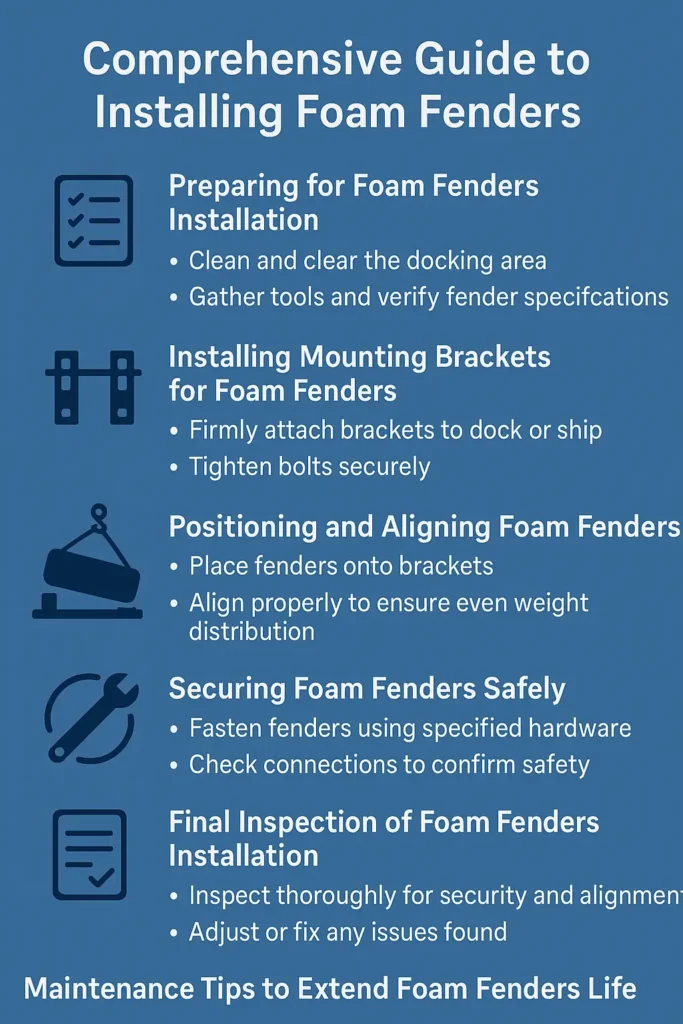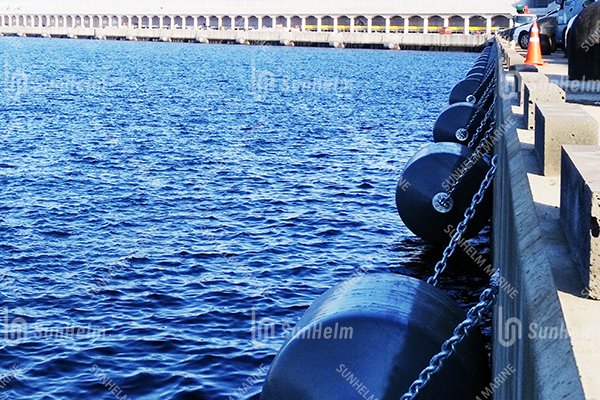Foam fenders protect ships and docks from damage during berthing. They absorb impact energy effectively and last long even in tough marine conditions. Installing them correctly ensures safety and maximizes their lifespan.

1. Preparing for Foam Fenders Installation
Before starting the installation, clean and clear the docking area. Gather all necessary tools, such as lifting slings, cranes, mounting brackets, bolts, and safety gear. Also, verify the foam fenders’ size, weight, and mounting requirements to match your dock or vessel.

2. Installing Mounting Brackets for Fenders
First, firmly attach the mounting brackets to the dock or ship. Make sure they align precisely with the foam fenders’ specifications. Then, tighten all bolts securely to handle operational stresses and prevent loosening.
3. Positioning and Aligning
Next, use lifting equipment to place the foam fender onto the brackets carefully. Align the fenders correctly so their weight distributes evenly. Proper alignment helps reduce wear and ensures better protection.
4. Securing Foam Fenders Safely
After positioning, fasten the foam fender to the brackets using the specified hardware. Double-check all connections to confirm they are tight and safe. This step prevents fenders from shifting during vessel docking.
5. Final Inspection of Fenders Installation
Finally, conduct a thorough inspection of the entire installation. Confirm that foam fender are secure, aligned, and functioning as intended. If you find any issues, adjust or fix them immediately to maintain safety.
Maintenance Tips to Extend Fenders Life
To keep foam fender in good condition, regularly inspect their outer skin and hardware for damage or corrosion. Clean them with fresh water to remove salt and debris. Also, check the mooring points on the dock or vessel for any signs of wear.
Frequently Asked Questions about Foam Fenders Installation
Q1: Why choose foam fender over other types?
Foam fenders absorb energy efficiently and maintain their shape without deflating, unlike pneumatic fenders. This makes them durable and reliable in harsh marine environments.
Q2: Can foam fender fit all vessel types?
Yes, foam fenders suit many vessels, from cargo ships to passenger ferries. Selecting the right size depends on the vessel’s displacement and berthing conditions.
Q3: How do I select the correct size of foam fenders?
Consider the ship’s weight, berthing speed, and dock design. Consulting a marine expert helps you choose the ideal fender size.
Q4: What if the foam fender’s outer skin gets damaged?
Minor scratches can be cleaned or buffed. For severe damage, follow the manufacturer’s repair guidelines or contact a professional.
Q5: How to maintain foam fender for best performance?
Inspect regularly for wear and corrosion, clean frequently, and replace any worn parts promptly.
By following these clear installation and maintenance steps, you will maximize the protection that foam fenders provide to your vessels and docks. Always use proper tools and inspect your equipment regularly to ensure long-lasting performance.


